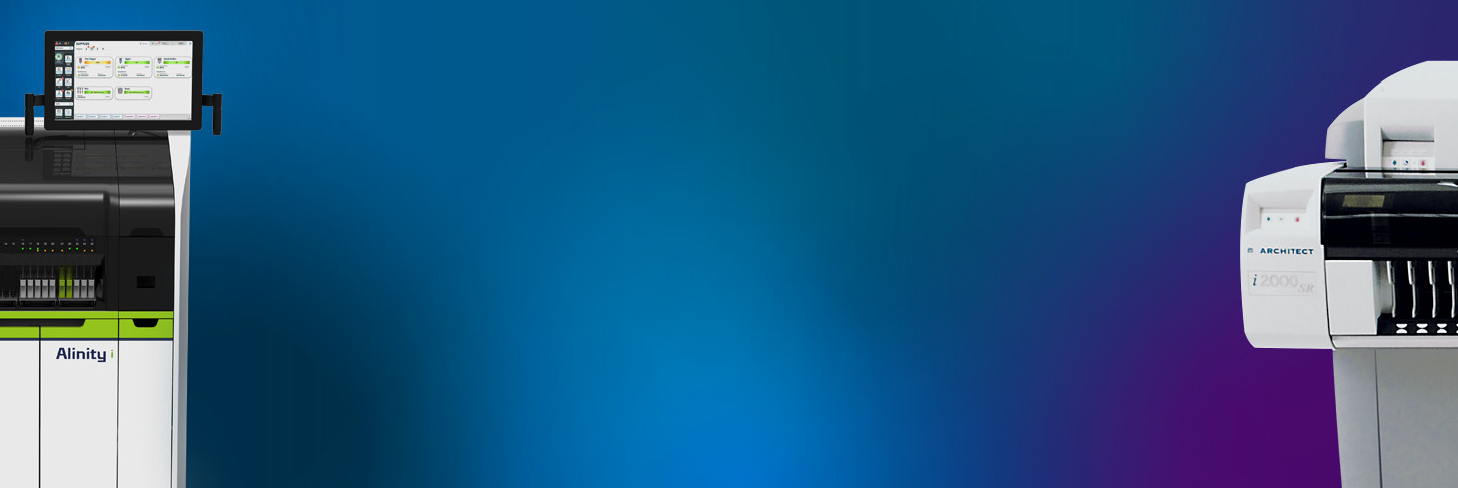端到端解决方案
了解雅培的端到端解决方案如何提供协同价值,从而帮助您的实验室实现和保持卓越。
病毒性肝炎是一类全球性健康问题,也是导致慢性肝炎、肝硬化或肝细胞癌发生的主要原因。1,5 有五种不同的病毒与肝炎有关,其中最常见的是甲型肝炎病毒 (HAV)、乙型肝炎病毒 (HBV) 和丙型肝炎病毒 (HCV)。 2022 年,有 2.54 亿人携带 HBV,估计有 5,000 万人感染 HCV,2 而许多人并不知道自己已感染 HCV。肝炎是可以预防且可以得到有效治疗的,而 HCV 更是可以治愈的。HCV 患者在接受新型高效泛基因型直接作用抗病毒 (DAA)3 治疗时,预计 95% 的 HCV 患者可被治愈。4,70 因无症状感染率较高,导致及时诊断肝炎具有挑战性,诊断性检测仍然是关键的第一步。
雅培通过一系列协调化创新系统产品为实验室提供支持,包括 Alinity 和 ARCHITECT。这些系统提供支持 HAV、HBV 和 HCV 患者管理所需的可扩展且灵活的检测选项。这些解决方案结合雅培的 AlinIQ 数字健康解决方案,有助于精简您的实验室操作,支持消除肝炎的目标。
1972 年,雅培推出首项肝炎检测。为了确保持续的精确病毒检测,自 1994 年以来,雅培一直通过全球病毒监测计划走在监测肝炎的前沿。如今,该计划已扩展至雅培疫情防御联盟,这是首个致力于消除肝炎等流行病的全球网络。
秉承雅培的创新历史,我们的专家携手合作,共同应对当今的传染病挑战,并不断努力提高我们的诊断准确性。我们对瞬息万变的传染病态势有着全面的了解,这是提供临床信心的关键,这也能让每一位受影响者更接近他们所需的护理。
此外,我们的测定设计不易受到生物素干扰。6
由于症状性甲型肝炎病毒 (HAV) 感染在临床上无法与乙型肝炎病毒或丙型肝炎病毒感染区分开来,血清学检测便成为实现正确诊断的重要工具。 在 HAV 感染的急性期,患者血清中出现抗-HAV IgM,通常在症状出现时即可检测到这种抗体。7-10
大多数情况下,抗-HAV IgM 应答通常在患病第一个月内达到峰值,并可持续存在长达 6 个月。11,12 存在抗-HAV IgG 且抗-HAV IgM 检测结果显示无应答表明既往感染过甲型肝炎病毒 (HAV) 或接种过 HAV 疫苗。13
Alinity i 和 ARCHITECT HAVAb IgG 测定是一种化学发光微粒子免疫分析法 (CMIA),用于在 Alinity i 和 ARCHITECT 系统上对人血清和血浆中的甲型肝炎病毒 IgG 抗体(抗-HAV IgG)进行定性检测。Alinity i 和 ARCHITECT HAVAb IgG 测定用于辅助诊断甲型肝炎病毒感染或检测抗-HAV IgG。14, 15
Alinity i 和 ARCHITECT HAVAb IgM 测定是一种化学发光微粒子免疫分析法 (CMIA),用于在 Alinity i 和 ARCHITECT 系统上对人血清和血浆中的甲型肝炎病毒 IgM 抗体(抗-HAV IgM)进行定性检测。Alinity i 和 ARCHITECT HAVAb IgM 测定用于辅助诊断急性或近期甲型肝炎病毒感染。 16, 17
在感染期间,乙型肝炎病毒 (HBV) 会产生过量的乙型肝炎病毒表面抗原 (HBsAg),这种抗原可在感染者的血液中检测到。 它的作用是使病毒结合至肝细胞,它也是中和抗体的靶结构。18,19 HBsAg 测定通常用于辅助诊断疑似乙型肝炎病毒 (HBV) 感染并监测感染者的状态,即确定患者感染是否已痊愈,或患者是否已发展为慢性 HBV 感染。20
对于急性或慢性肝炎的诊断,应结合患者病史和是否存在其他乙型肝炎血清学标记物来判断 HBsAg 的反应性。对于重复呈现反应性的样本,应使用人抗-HBs 执行中和确证性检测以进行确认。
Alinity i 和 ARCHITECT HBsAg Next 定性测定是一种化学发光微粒子免疫分析法 (CMIA),用于在 Alinity i 和 ARCHITECT 系统上对人血清和血浆(包括尸检 [无心跳] 后采集的样本)中的乙型肝炎病毒表面抗原 (HBsAg) 进行定性检测。HBsAg Next 定性测定用于辅助诊断乙型肝炎病毒 (HBV) 感染,并用作筛查检测,以防止 HBV 通过血液、血液成分、细胞、组织和器官传播给接受者。21, 22
Alinity i 和 ARCHITECT HBsAg Next 确证性测定是一种化学发光微粒子免疫分析法 (CMIA),用于在 Alinity i 和 ARCHITECT 系统上通过特异性抗体中和方式来确认人血清和血浆(包括尸检 [无心跳] 后采集的样本)中是否存在乙型肝炎病毒表面抗原 (HBsAg)。HBsAg Next 确证性测定用于确认在 HBsAg Next 定性测定中重复呈现反应性的样本。23, 24
Alinity i 和 ARCHITECT HBsAg 测定是一种化学发光微粒子免疫分析法 (CMIA),用于在 Alinity i 和 ARCHITECT 系统上对人血清和血浆中的乙型肝炎病毒表面抗原 (HBsAg) 进行定量测定。25, 26
Alinity i 和 ARCHITECT HBsAg 确证性 V.1 测定是一种化学发光微粒子免疫分析法 (CMIA),用于在 Alinity i 和 ARCHITECT 系统上通过特异性抗体中和方式来确认人血清和血浆中是否存在乙型肝炎病毒表面抗原 (HBsAg)。27, 28
乙型肝炎 e 抗原 (HBeAg) 测定可用于监测乙型肝炎病毒感染的进展。在乙型肝炎病毒感染早期,HBeAg 是继乙型肝炎病毒表面抗原 (HBsAg) 出现后首个可检测到的抗原。29 在急性感染的病毒复制期内,这两种抗原的滴度会迅速升高。HBeAg 的存在与以下情况相关:感染性病毒(戴恩颗粒)数量增加、肝细胞核内出现核心颗粒,以及血清中存在乙型肝炎病毒特异性 DNA 和 DNA 聚合酶。29
Alinity i 和 ARCHITECT HBeAg 测定是一种化学发光微粒子免疫分析法 (CMIA),用于定性检测人血清和血浆中的乙型肝炎 e 抗原 (HBeAg),可用于辅助诊断和监测乙型肝炎病毒感染。Alinity i 和 ARCHITECT HBeAg 测定也可用于定量测定 HBeAg。有关说明和更多信息,请参阅 Alinity i 和 ARCHITECT HBeAg 定量校准标样包装说明书(分别为 09P1001 和 7P24-01)。30, 31
大多数急性 HBV 病毒感染均可检测到病毒特异性 IgM 抗体,它是急性疾病的可靠标记物。急性感染患者的抗-HBc IgM 浓度迅速升高;在急性乙型肝炎病毒感染的患者中,可检测到高水平的抗-HBc IgM,而在慢性感染病程中,可能检测到的水平较低。32-37
Alinity i 和 ARCHITECT 抗-HBc IgM 测定是一种化学发光微粒子免疫分析法 (CMIA),用于在 Alinity i 和 ARCHITECT 系统上对人血清和血浆中乙型肝炎病毒核心抗原的 IgM 抗体(抗-HBc IgM)进行定性检测。Alinity i 和 ARCHITECT 抗-HBc IgM 测定用于辅助诊断急性或近期乙型肝炎病毒感染。38, 39
抗-HBc 测定可用作当前或既往感染 HBV 的指标。在急性 HBV 感染中出现乙型肝炎病毒表面抗原 (HBsAg) 后,可在血清中发现抗-HBc。在 HBsAg 消失后和能检测到 HBsAg 抗体(抗-HBs)前,该抗体将持续存在。40-46 在没有任何其他 HBV 标记物信息的情况下,必须考虑具有可检测水平的抗-HBc 代表着个体可能当前正处于感染 HBV 的状态,或者代表着感染可能已经痊愈。47
Alinity i 和 ARCHITECT 抗-HBc II 测定是一种化学发光微粒子免疫分析法 (CMIA),用于在 Alinity i 和 ARCHITECT 系统上对人血清和血浆(包括尸检 [无心跳] 后采集的样本)中的乙型肝炎病毒核心抗原的抗体(抗-HBc)进行定性检测。Alinity i 和 ARCHITECT 抗-HBc II 测定用于辅助诊断乙型肝炎感染,并用作筛查检测,以防止乙型肝炎病毒 (HBV) 通过血液、血液成分、细胞、组织和器官传播给接受者。48, 49
乙型肝炎 e 抗原 (HBeAg) 及其抗体(抗-HBe)与乙型肝炎病毒感染有关。50 HBeAg 最早可在乙型肝炎病毒感染早期、乙型肝炎病毒表面抗原 (HBsAg) 出现不久后检测到。29
在急性乙型肝炎感染期间,出现从 HBeAg 到 抗-HBe 的血清学转化通常表明感染消退和感染水平降低。HBeAg 阴性的结果可能表明 (1) 病毒复制达到峰值之前的早期急性感染,或 (2) HBeAg 降至低于可检测水平时的早期康复。可根据是否存在抗-HBe 区分这两个阶段。51 慢性乙型肝炎患者通常为抗-HBe 阳性。37
Alinity i 和 ARCHITECT 抗-HBe 测定是一种化学发光微粒子免疫分析法 (CMIA),用于在 Alinity i 和 ARCHITECT 系统上对人血清和血浆中的乙型肝炎 e 抗原的抗体(抗-HBe)进行定性检测。Alinity i 和 ARCHITECT 抗-HBe 测定用于辅助诊断和监测乙型肝炎病毒感染。 52, 53
抗-HBs 测定可检测人血清和血浆中存在的乙型肝炎病毒表面抗原的抗体(抗-HBs)浓度。抗-HBs 测定通常用于监测乙型肝炎疫苗接种是否成功。现已表明,存在抗-HBs 对于预防乙型肝炎病毒 (HBV) 感染非常重要。54
Alinity i 和 ARCHITECT 抗-HBs 测定是一种化学发光微粒子免疫分析法 (CMIA),用于在 Alinity i 和 ARCHITECT i 系统上对人血清和血浆中的乙型肝炎病毒表面抗原的抗体(抗-HBs)进行定量测定。55, 56
HCV 血清学检测包括检测 HCV 抗体(抗-HCV)和 HCV 抗原 (Ag)。一般而言,在感染早期的前几周内无 HCV 抗体,直到感染后约 6-10 周才能检测到。存在抗-HCV 表明个体可能已感染 HCV,可能携带传染性 HCV,和/或可能有能力传播 HCV 感染。57
HCV Ag 测定可检测新发感染者的急性 HCV 感染,这些个体由于存在 HCV 特异性抗体应答延迟,造成 HCV 抗体呈血清阴性。在抗-HCV 阳性个体中,HCV Ag 是活性病毒复制的标记物。58-60 HCV Ag 测定用于辅助诊断疑似 HCV 感染和监测感染者的状态,即患者感染是否已痊愈,或患者是否已发展为慢性 HCV 感染。
Alinity i 和 ARCHITECT 抗-HCV 测定是一种化学发光微粒子免疫分析法 (CMIA),用于在 Alinity i 和 ARCHITECT 系统上对人血清和血浆(包括尸检 [无心跳] 后采集的样本)中的丙型肝炎病毒抗体(抗-HCV)进行定性检测。
Alinity i 和 ARCHITECT 抗-HCV 测定用于辅助诊断丙型肝炎感染,并用作筛查检测,以防止丙型肝炎病毒 (HCV) 通过血液、血液成分、细胞、组织和器官传播给接受者。61, 62
ARCHITECT HCV Ag 测定是一种化学发光微粒子免疫分析法 (CMIA),用于定量测定人血清和血浆中的丙型肝炎病毒核心抗原。63
在 Lab Central 客户门户上登录或注册新帐户。在这里,您可以查看针对预期用途的检测特定包装说明书、重要的安全信息并管理您的个性化实验室指标。
Alinity 是您的整体实验室解决方案,这是一种统一的整体化系统,旨在为您的实验室提供前所未有的整合体验。HAV、HBV 和 HCV 测定可在 Alinity i 上使用,这是一种紧凑式免疫测定系统,可最大限度提高通量,而且每平方米处理的检测量比大多数系统更多,使其成为当今市场上效率最高的系统之一。
Alinity 正在通过临床化学、免疫测定和一体化系统推动全球实验室转型。如需了解更多信息,请访问 Alinity ci 系列页面。
雅培的 HAV、HBV 和 HCV 测定还可在高通量 ARCHITECT i2000SR 系统上进行,该系统可在 24 小时内产生 4,000 多个结果,首个结果仅需 29 分钟即可得出。
ARCHITECT i2000SR 和 i1000SR 符合您实验室的高标准要求。如需了解其他检测服务单、系统规格和资源,请访问 ARCHITECT 免疫测定系统页面。


除了获得肝炎学习指南之外,还可以探索其他有助于培养关键实验室能力的雅培学习指南。


了解雅培的端到端解决方案如何提供协同价值,从而帮助您的实验室实现和保持卓越。
了解实验室科学、治疗领域以及雅培创新方面的最新消息。
了解雅培的战略转型计划如何为实验室提供洞察力以及如何提升健康系统绩效。
使您离开 Abbott 全球网站的链接不受 Abbott 控制;对于任何此类网站的内容或者来自此类网站的任何进一步链接,Abbott 概不负责。Abbott 向您提供这些链接仅为方便之用,包含任何链接并不意味着所链接的网站已获 Abbott 认可。您已请求的网站的屏幕尺寸对您而言也可能并非最佳尺寸。
请注意,您请求的网站适用于某一特定国家/地区或多个国家/地区的居民,具体如该网站所述。因此,该网站包含的信息可能涉及尚未在其他国家或地区获得批准的药品、医疗设备和其他产品或其用途。